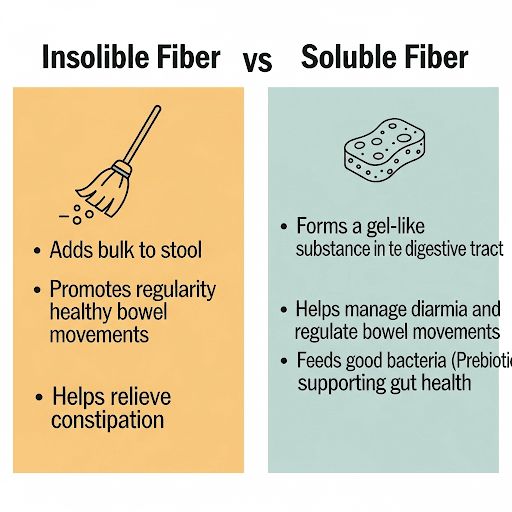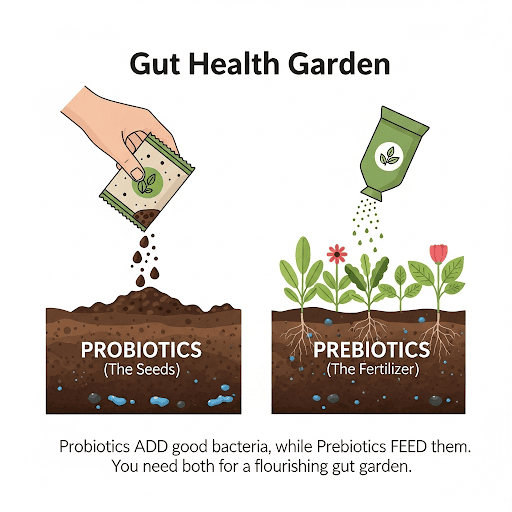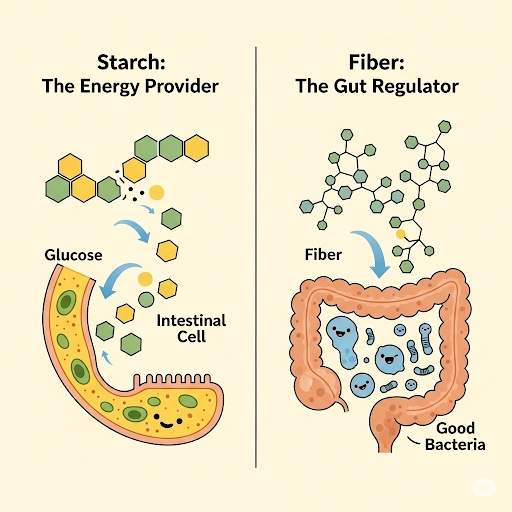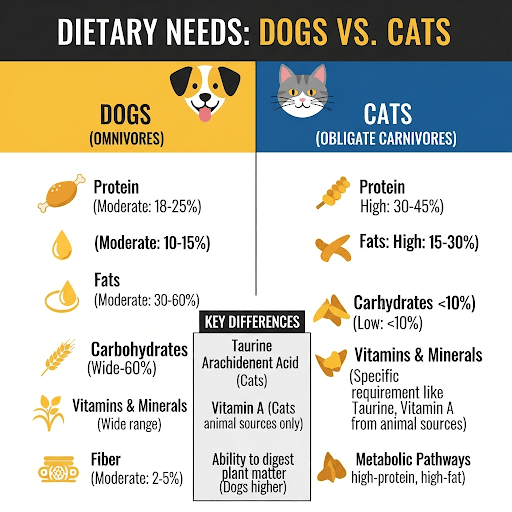Every pet owner is an unofficial expert on one particular subject: their pet’s poop. We know what’s normal and what’s not, because the quality of what comes out is a direct and daily report on our pet’s digestive health. A key player in this daily report is one of the most underrated nutrients in the bowl: fiber.
For years, fiber was dismissed as "roughage" or a non-essential "filler" used to bulk up pet food. But modern veterinary science has revealed that this complex carbohydrate is actually a multi-talented nutrient. The true function of fiber in pet food is to act as the master regulator of the digestive system, playing a critical role in everything from gut health to weight management.
The Two Faces of Fiber: Soluble vs. Insoluble
Not all fiber is the same. It is broadly categorized into two types based on how it interacts with water, and each type has a distinct and important job within your pet’s digestive tract. Understanding soluble vs insoluble fiber for pets is the key to understanding gut health.
Insoluble Fiber
Think of this as the "broom" of the gut. This type of fiber does not dissolve in water. Instead, it absorbs water and adds physical bulk to the contents of the intestine. This bulk helps to stimulate movement, pushing everything along at a regular pace. Its primary jobs are to prevent constipation and ensure consistent, well-formed stools. Common sources include cellulose and lignin, often found in ingredients like pea or potato fiber.
Soluble Fiber
Think of this as the "sponge" of the gut. This fiber does dissolve in water, forming a viscous, gel-like substance. This gel can slow down the transit of food through the digestive tract, which is incredibly helpful for managing diarrhea by allowing more time for water to be absorbed. It also promotes a feeling of fullness, which is beneficial for weight management. Most importantly, it is a powerful prebiotic.
The Power of Prebiotics: Feeding the Good Guys
This is where fiber gets truly exciting. Certain types of soluble fiber act as prebiotics. This means that while your pet can't digest them, they serve as the primary food source for the trillions of beneficial bacteria living in their colon, known as the gut microbiome.
When these "good bacteria" ferment prebiotic fiber, they produce beneficial compounds called Short-Chain Fatty Acids (SCFAs). These SCFAs are miracle workers for gut health: they provide the main source of energy for the cells lining the colon, help maintain a healthy intestinal barrier, and create an environment that inhibits the growth of harmful, disease-causing bacteria. A healthy microbiome, well-fed by prebiotic fiber, is the foundation of strong fiber for dog's digestion and a cornerstone of health for all pets, including providing essential prebiotics for cats.
Optimizing gut health is a science. Our meal planner app includes recipes specifically formulated with targeted prebiotic fibers, like beet pulp or chicory root, to nourish your pet's microbiome from within. It’s proactive digestive care built right into their bowl.
Practical Fiber: Common Sources and When More is More
A well-formulated pet food will contain a blend of both fiber types. You can spot them on the ingredient list: beet pulp is a fantastic mixed source, while pumpkin and psyllium husk are great soluble fibers, and cellulose is a common insoluble source.
In some cases, a veterinarian might recommend a diet with higher fiber levels to help manage specific conditions, such as:
- Weight Management: Fiber adds bulk and promotes fullness with very few calories, helping pets on a diet feel satisfied.
- Diabetes: Soluble fiber can slow down the absorption of glucose from the intestines, helping to stabilize blood sugar levels.
- Anal Gland Issues: The firm, bulky stools created by insoluble fiber can help to naturally express the anal glands with each defecation.
(Fiber plays a huge role in managing weight. For more on this, read our article on Calories in Pet Food: The Energy That Powers Your Pet.)

Conclusion: Embracing the Importance of a Well-Fed Gut
Fiber is a nutritional workhorse. It is far from being a simple filler; it is the master regulator of the digestive tract, an essential tool for weight management, and the fuel for the beneficial bacteria that protect your pet from the inside out.
By understanding the difference between soluble and insoluble fiber, you can better appreciate the thoughtful formulation behind a high-quality diet and choose the food that best supports your pet’s unique digestive needs.
A happy pet truly starts with a happy gut. If you have concerns about your pet's digestion or weight, talk to your veterinarian about the role fiber can play. Explore our meal planner to discover recipes designed with the optimal fiber blend to support your pet from the inside out.


